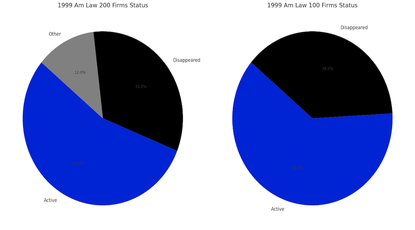New data released by the Judicial Council reveals that for the 17th year in a row, California's judiciary bench has grown increasingly diverse. As of December 31, 2022, female judicial officers make up 39.9% of all judicial officers across all court levels. This represents a 1 percentage point increase from the previous year and a 12 percentage point increase since 2006, the first year that data were collected for this purpose. Additionally, the percentage of Asian, Black, and Hispanic judicial officers has doubled, while the proportion of white judicial officers has decreased by more than 8 percentage points since 2006.
California's Judicial Branch has made it clear in its updated Strategic Plan for California’s Judicial Branch that it is committed to promoting diversity and inclusivity within the court system. The Judicial Diversity Toolkit, an initiative by the Judicial Council, encourages courts to reach out to underrepresented groups and educate them about pursuing legal careers. The Chief Justice's Civic Learning Initiative, which promotes civic learning and engagement in public schools, is also supported by the council.
The Judicial Mentor Program, a collaboration between the Governor's office and the courts, is a statewide effort to recruit and develop qualified and diverse judicial applicants. In addition, appellate and superior courts throughout the state have also implemented local mentor programs.
Governor Gavin Newsom's appointments have contributed to the progress of increasing judicial diversity. During his first term in office, over half of his 288 appointments were women and 59% identified as Asian, Black or African-American, Hispanic, or Native Hawaiian or other Pacific Islander. He has also appointed openly gay and diverse justices such as Justice Patricia Guerrero, the first Latina Chief Justice, Justice Kelli Evans, an openly gay justice of color, and Justice Martin Jenkins, the first openly gay justice and third African American man to serve on the state's highest court.
In December 2022, the Judicial Council conducted a voluntary survey of California judges and justices to collect data on the demographics of the California bench, including gender, ethnicity, and sexual orientation. The data collected revealed that the percentage of female justices and judges has steadily increased to 39.9% since 2006. The data also show increases in the percentage of responding justices and judges in various race/ethnicity categories:
- American Indian or Alaska Native (.4% in 2022 compared to 0.1% in 2006);
- Asian (9.3% in 2022 compared to 4.4% in 2006);
- Black or African American (8.6% in 2022 compared to 4.4% in 2006);
- Hispanic or Latino (12.5% in 2022 compared to 6.3% in 2006);
- Pacific Islander (0.4% in 2022 compared to 0.1% in 2006);
- White (61.4% in 2022 compared to 70.1% in 2006);
- Some Other Race (1.1% in 2022 compared to 0.2% in 2006);
- More Than One Race (4.5% in 2022 and also 4.4% in 2006); and
- Information Not Provided (1.9% in 2022 compared to 9.9% in 2006).
The study also included data on gender identity/sexual orientation and veteran and disability status. More than 80% of respondents provided information about their gender identity and sexual orientation, reporting as follows:
- Heterosexual – 75.4%
- Lesbian - 1.8%
- Gay - 2.6%
- Bisexual - 0.2%
- Transgender - 0.1%
- Information not provided – 19.8%
Finally, the study included data on veteran and disability status for the 9th year in a row. Of the 831 active trial court judges responding to the question about their status as a veteran, 52 respondents (6%) indicated they have served in the military. Of the 834 active judges responding to the question concerning their disability status, 19 judges (2%) indicated they have a disability.
Further reading:









